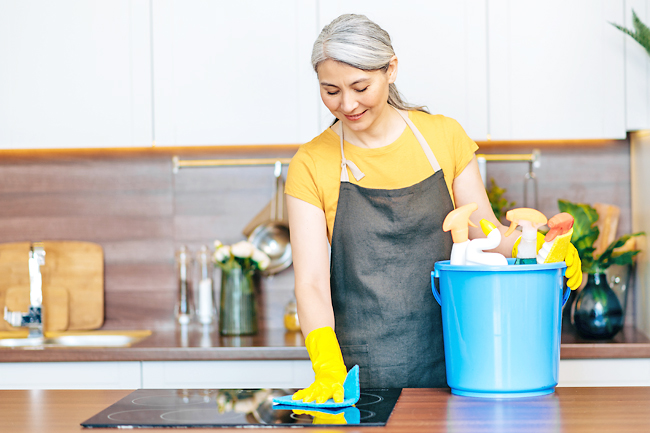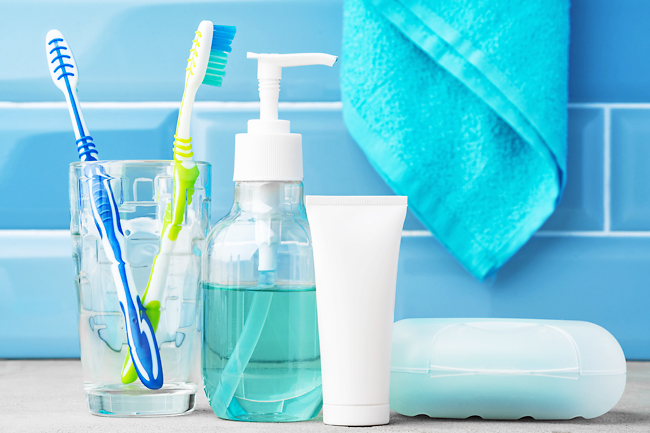Susannah Herrada
THE WASHINGTON POST – Cleaning is about more than sparkling countertops and company-ready bathrooms – it’s about protecting yourself.
“We co-exist with microbes, but there are some that are more harmful to humans than others,” said infectious-disease epidemiologist and Director of Public Health at Muhlenberg College in Allentown, Pennsylvania Chrysan Cronin.
“We need to be a little more vigilant in making sure we don’t come in contact with those.”
And while you know your toilet is germy and you’re probably aware that your phone and doorknobs can get gross, too, public health experts and epidemiologists see many more bacterial hot spots in a typical home.
So wash your hands and read on for some of the sneakier places where germs and biofilms – the technical term for slimy layers of bacterial colonies – often lurk.
TOOTHBRUSH HOLDER
The toothbrush holder might be a microbiologist’s worst nightmare. Since it tends to be close to the toilet, a toothbrush holder – and the toothbrushes it contains – is often in the blast radius of the faecal bacteria that aerosolises whenever you flush. (Sorry; hope you’re not eating while reading).
According to a 2021 University of Arizona study published in the Journal of Applied Microbiology, once airborne, these microorganisms have been shown to settle on anything nearby – so you should also consider faucet handles and other personal-care items left on the counter. To mitigate the grossness, close the lid before flushing and keep the bowl clean.
Store your toothbrush in a drawer or medicine cabinet where it can dry out between uses but won’t be as exposed.



THE DISPOSAL FLANGE
Plenty of research confirms that the kitchen sink is a hotbed of microbes. But Cronin’s lab went beyond that to zero in on the underside of your disposal’s black rubber drain flange, a location that tends to overperform on ickiness. The flange’s underside harbours what, in Cronin’s most scientific prose, is the “slimiest, grossest, germiest biofilm” you’ve ever seen – all with the potential to be aerosolised. She explained: “As soon as you turn that garbage disposal on and it starts kicking water back up into your sink, those microbes spray all around your sink area.”
To mitigate risk of contamination, glove-up, flip up the flange, and scrub off the slime with grease-cutting dish soap or other cleaning solution. Avoid straight bleach or undiluted vinegar as both can degrade the rubber over time. Prevent biofilm build-up by remembering to clean the flange whenever you clean the sink.
According to research from NSF International – the go-to global organisation for establishing public health standards and certifications – the sink sponge is a veritable Noah’s ark in the diversity of microorganisms it contains.
SPONGES AND DISH TOWELS
For starters, the average sponge supports mould and yeast. While mould comes with its own bad reputation, yeast also can be problematic, especially for people who are otherwise seriously ill or immunocompromised. A damp sponge is the perfect habitat for bacteria, too, which may include E coli, salmonella and campylobacter, all pathogens that can cause fever and stomach upset. You can zap a wet sponge in the microwave for a few minutes or run it through the dishwasher to disinfect it. But even with those precautions, you should toss it after a week. In cahoots with your sponge are your dish towels, which soak up all kinds of grime while you’re wiping up messes and drying your hands. Cronin recommends a “once and done” rule: Grab a new one after each use. If that feels excessive, at least make a point to grab a fresh one daily.
COFFEE RESERVOIR
That morning cup might not look as appealing if you knew what was growing in your coffee maker’s reservoir – a front-runner for high yeast and mould contamination. NSF International actually ranks this under-the-radar spot among the top five germiest places in the home. Luckily, there’s a straightforward remedy: Follow the manufacturer’s instructions for a monthly cleaning with a ratio of one part water to one part distilled white vinegar.
KNOBS AND BUTTONS ON KITCHEN APPLIANCES
Don’t forget to include your appliance knobs and buttons when wiping down your kitchen surfaces. Though easily overlooked, they’re germ magnets since we touch them so frequently. Cronin recommends a 1:1 ratio of distilled white vinegar to water or a 5:100 ratio of bleach to water for disinfecting high-contamination zones like these.
SOFT-SIDED LUNCHBOXES
These tend to trap moisture and have nooks and crannies that are hard to keep clean, upping the potential for mould and harmful bacteria. If yours isn’t machine-washable, Good Housekeeping recommends a wipe down with vinegar spray and a hit of disinfectant spray that’s safe for food contact surfaces.
PET BOWLS
Contrary to the popular myth, a dog’s mouth is not cleaner than a human’s. Wash pet bowls regularly with hot, soapy water – and reserve a separate sponge for pet items. While you’re at it, toss hard pet toys in the sink suds and run soft toys through the washing machine.
PURSES, WALLETS AND KEYS
Even meticulously cleaned homes are susceptible to microbial invaders, thanks to the high-touch items that travel into the world with us.
Shoes and cellphones are among the more obvious culprits for transporting germs, but don’t forget about your purse, wallet or keys, all of which regularly make the rounds from our hands, to the car, to the office, to the grocery store cart, to who knows where else.
While metal keys can be dunked in sudsy water or tolerate harsh cleaners, car key fobs require extra care. Nissan USA suggests rubbing fobs with a soft cloth sprayed with 70 per cent alcohol. Purses and wallets, even some coated leather ones, can tolerate alcohol on a soft cloth. When in doubt, check with the manufacturer or test in an inconspicuous spot first. At the very least, you can hang your bag in a designated spot by the door or in a closet, and avoid placing these items on the kitchen counter or other eating surfaces.









